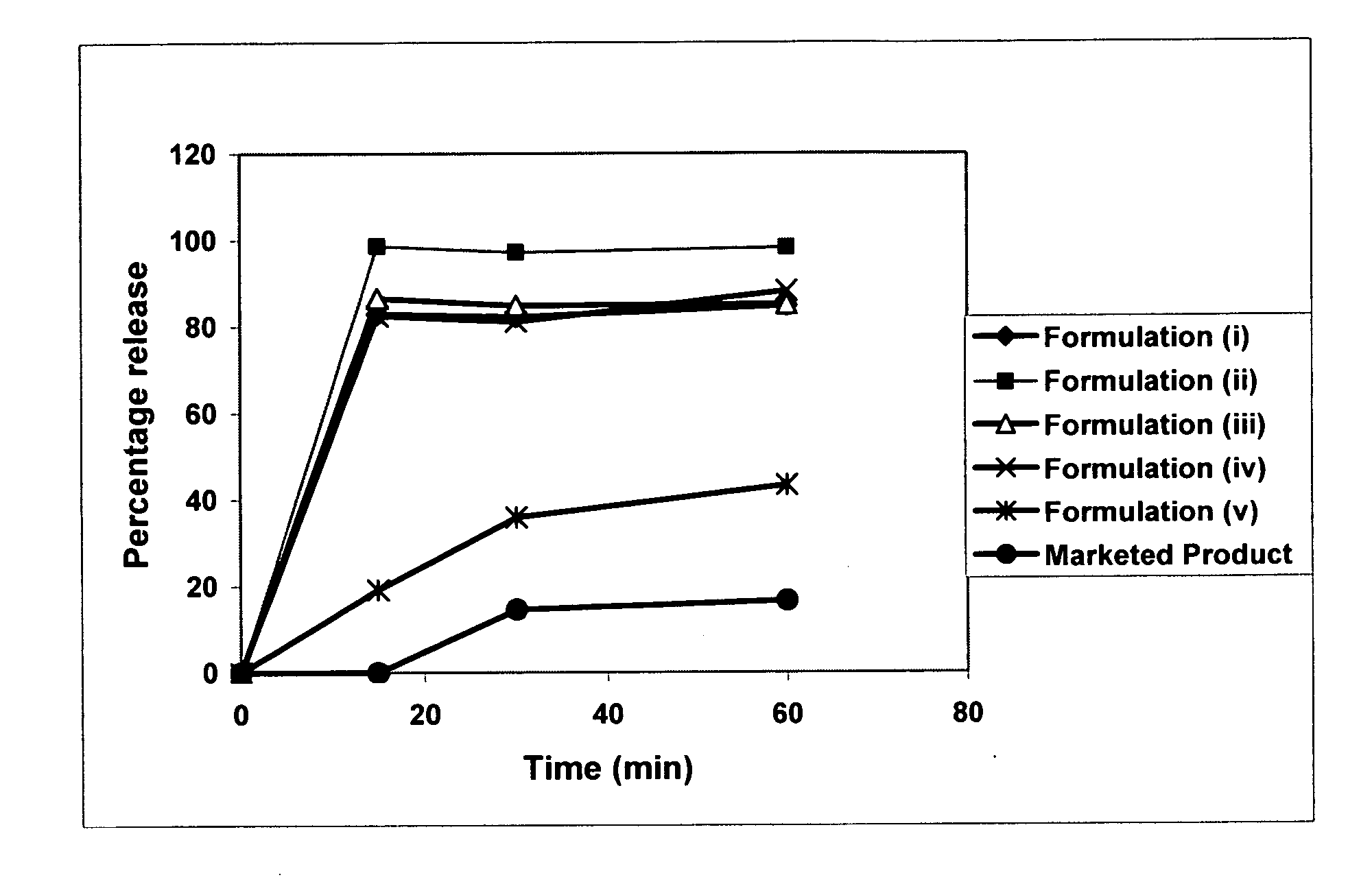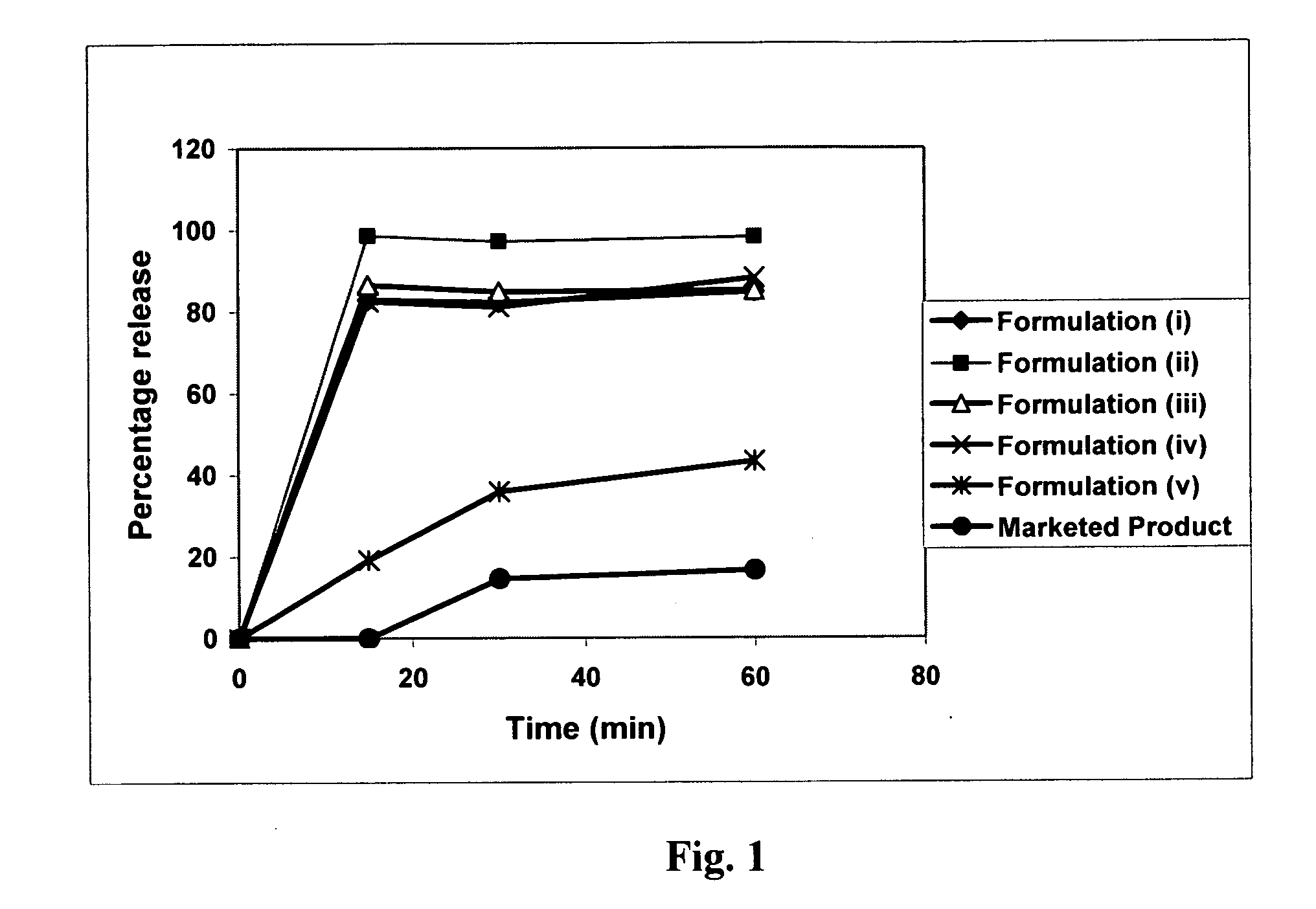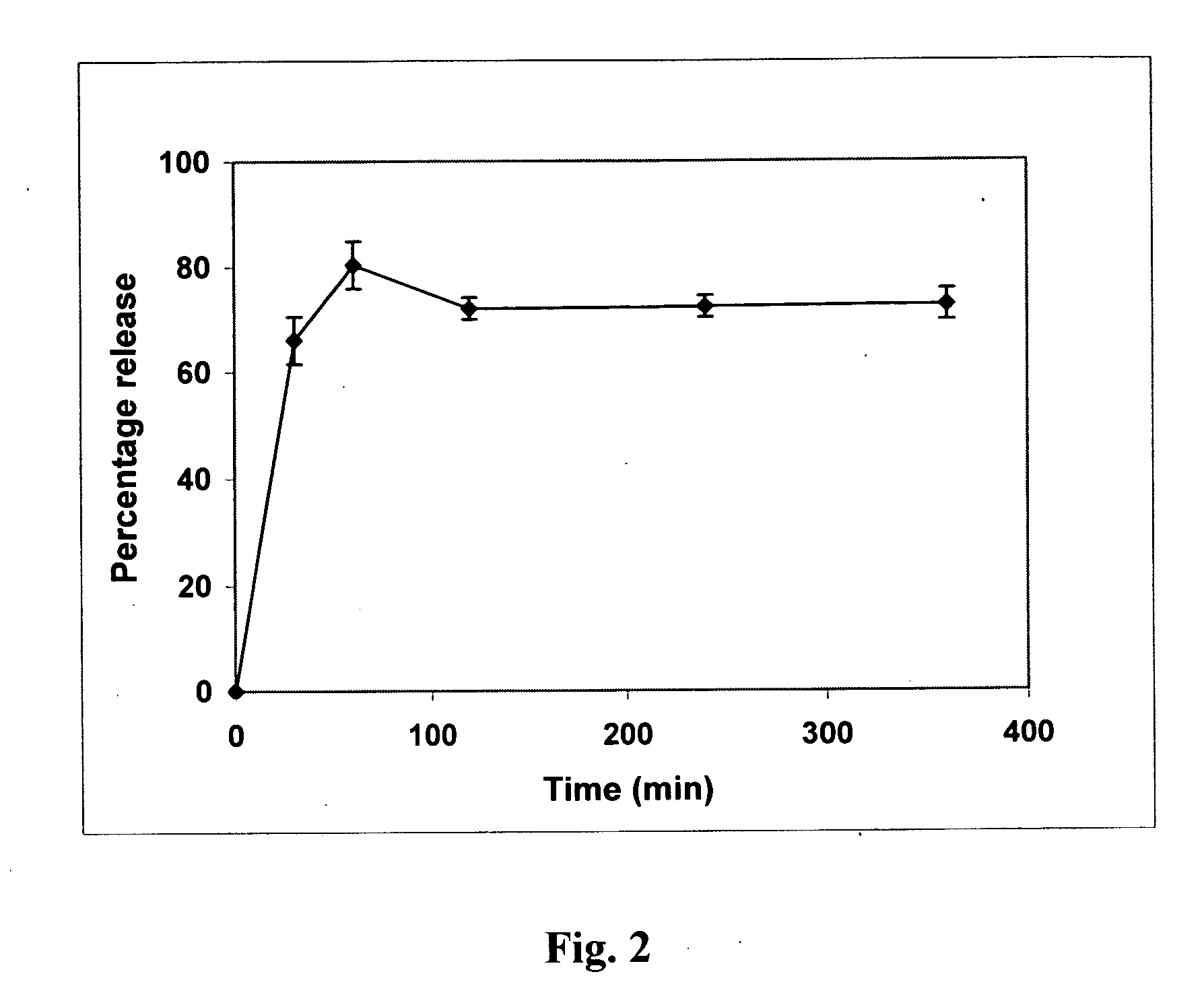Delivery of tetrahydrocannabinol
a technology of tetrahydrocannabinol and delivery system, which is applied in the direction of non-active ingredients in oil/fat/waxes, biocide, and drug compositions, etc. it can solve the problem of large inter-subject variability in absorption of thc orally, poor or partial response, so as to avoid hepatic first-pass metabolism and promote selective discrimination of drug transport
- Summary
- Abstract
- Description
- Claims
- Application Information
AI Technical Summary
Benefits of technology
Problems solved by technology
Method used
Image
Examples
example 1
[0109] Tests were conducted to determine the feasibility of applying Type I and Type II self-emulsifying drug delivery systems for THC, as well as for improving dissolution testing over the existing sesame oil based compositions (i.e. Marinol®). Based on initial results, it was found that Type III self-emulsifying drug delivery systems could be used with the addition of hydrophilic co-solvents (e.g. ethanol). The formulations tested to improve the dissolution of THC are shown in Table 1. The required amounts of excipients included therein along with THC (resin from) were transferred to the test tube and were sonicated for 30-45 min (temperature not more than 50° C.) until a clear solution was obtained. The solutions of respective formulations were filled into size “1” capsules. It was later found that heat could be applied to the formulation processing steps to improve formulation content uniformity and homogeneity.
TABLE 1mg of ingredient per formulation (% per caps)Composition(i)...
example 2
[0111] The above prepared formulation vii (Table 1), which was categorized as a Type I SEDDS system, was evaluated in various dissolution medium at 37° C. (Paddle, 75 RPM) in order to determine the most appropriate testing conditions. The percentage release obtained in each of the tested dissolution medium is set forth in Table 2.
TABLE 2Percentage release (min)Dissolution medium153060120240Water0000.31.12% SLS in Water≧100.0≧100.0≧100.0≧100.0≧100.05% TritonX-10067.5≧100.0≧100.0≧100.0≧100.0Acetate buffer, pH 4.50.00.00.00.00.0Borate buffer, pH 9.539.867.3≧100.0≧100.0≧100.00.1N HCl0.00.00.00.00.0
It is evident from the above results in Table 2 that 2% SLS or 5% TritonX-100 is an ideal choice for evaluating the THC SEDDS formulations. Additional media such as simulated gastric and intestinal media may be required for further evaluation. In particular, fasted state simulated intestinal media (FaSSIF) and fed state simulated intestinal media (FeSSIF) are preferably used.
[0112] The dat...
example 3
[0113] Preferred Type I, Type II, and Type III SEDDS systems are isotropic in nature with uniform phase behavior before dilution in aqueous media. Phase separated SEDDS formulae, are not isotropic in nature and demonstrate cracking or poor matrix uniformity in the case of semi-solids.
[0114] Table 3 below shows the results of phase behavior examinations for select SEDDS, placebo formulations utilizing combinations of an oily carrier medium with Cremophor EL. Examinations were macroscopic (i.e. visual) as well as microscopic (Olympus™ Stereomicroscope).
TABLE 3Ingredient(a )(b)(c)(d)mg (%)mg (%)mg (%)mg (%)PHYSICAL STATEFluidicSemi-Semi-LiquidLiquidSolidSolidActive Agent0(3.85)0(3.85)0(3.85)0(3.85)Oil Component / Fatty Acid120.0(46.15)121.75(46.8)158.0(60.8)112.5(43.1)Carrier (e.g. Oleic Acid)Surfactant Component (e.g.120.0(46.15)121.75(46.8)79.0(30.4)112.5(43.1)Cremophor EL)Vitamin E, FCC5.0(1.925)———Ascorbyl Palmitate5.0(1.925)6.5(2.5)13.0(5.0)26.0(10.0)Total*250(100)250(100)250(100...
PUM
| Property | Measurement | Unit |
|---|---|---|
| Fraction | aaaaa | aaaaa |
| Mass | aaaaa | aaaaa |
| Mass | aaaaa | aaaaa |
Abstract
Description
Claims
Application Information
 Login to View More
Login to View More - R&D
- Intellectual Property
- Life Sciences
- Materials
- Tech Scout
- Unparalleled Data Quality
- Higher Quality Content
- 60% Fewer Hallucinations
Browse by: Latest US Patents, China's latest patents, Technical Efficacy Thesaurus, Application Domain, Technology Topic, Popular Technical Reports.
© 2025 PatSnap. All rights reserved.Legal|Privacy policy|Modern Slavery Act Transparency Statement|Sitemap|About US| Contact US: help@patsnap.com



